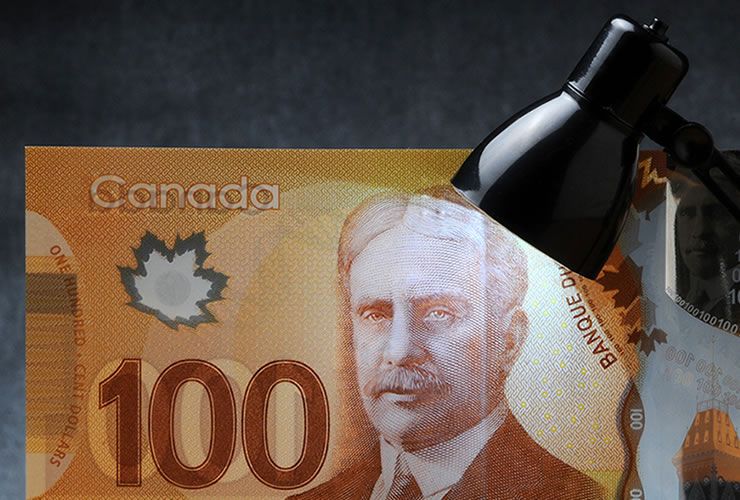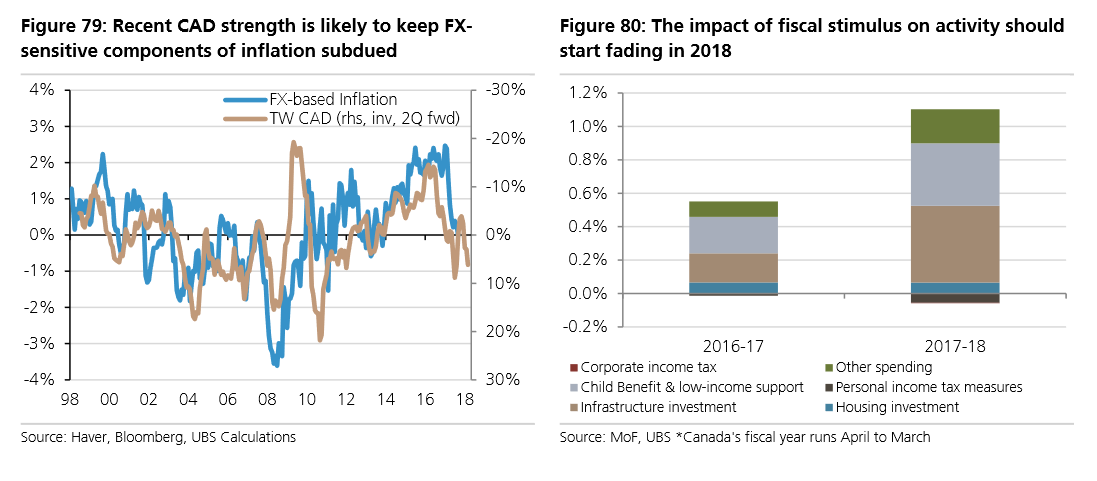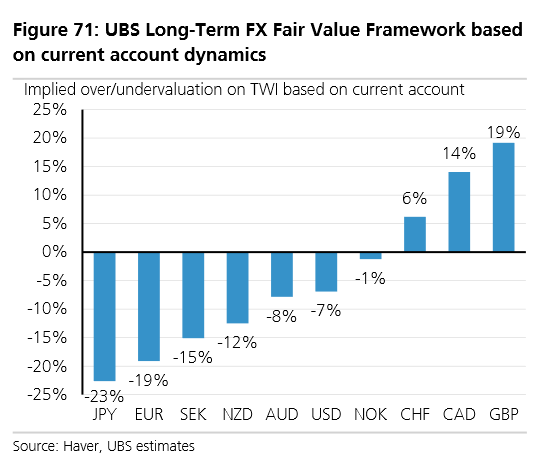Canadian Dollar on the Rocks: UBS

The fading effect of the Trudeau government's programme of public works and generous spending is set to dampen inflation and impact negatively on the currency.
The Canadian Dollar is set to weaken against most currencies especially the US Dollar suggests new research on the currency from Swiss financial services giant UBS.
The US-Dollar-to-Canadian Dollar is set to fall by over 5.0% between now and the end of 2018, and yet further in 2019, says Lefteris Farmakis, a currency strategist with UBS.
An unexpected slippage in Canadian economic growth, which will leave inflation subdued, is the expected cause of the Canadian Dollar's depreciation. Slowing inflation means the Bank of Canada will unlikely raise interest rates again, thus depriving the currency of a key support.
Recall the CAD's mid-year rally as the Bank of Canada surprised markets by raising interest rates? The Bank of Canada has increased interest rates twice in 2017 by 0.25% each time, from 0.5% to 1.0%, which is more than most other G10 countries.
Interest rates are one of the primary drivers of currency valuation: a rise in interest rates strengthens the host currency, and a fall weakens it.
This is because higher interest rates attract greater inflows of foreign capital drawn by the promise of higher returns, which in turn increases demand for the host currency.
Central banks raise interest rates when inflation rises, as higher interest rates encourage saving, discourage spending and make borrowing more expensive, thus dampening inflation.
Artifical Growth
UBS reckon the decision to raise interest rates twice in 2017 was a case of overoptimism at the BoC on the growth trajectory of the economy.
Growth will tail off as the factors supporting it fade argue UBS economists.
The growth spike the lead to the interest rate rises was mostly artificially-induced by the Canadian government which came to power in 2015 and instituted a large programme of public spending on infrastructure projects, public services and welfare.
These fiscally expansive policies gave the economy a boost, estimated by UBS to have been over 1.5%, but now that the effects are "fading" UBS expects a similar magnitude fall back in growth, and inflation.
"Recent CAD strength reflects short-term growth dynamics that are likely to fade next year, against a background of low inflation and deteriorating competitiveness," says Farmakis.

What's more, the Canadian Dollar's strength is now its own worst enemy, as the rising value of the currency has a dampening effect on inflation by reducing the cost of foreign imports.
The reason investors expect the BOC to continue raising interest rates is partly due to 'read-across' from the Federal Reserve, which is set to hike interest rates aggressively in the years to come.
Whilst it is true that Canada has always been heavily influenced by its neighbor, UBS thinks the 'read-across' has been over estimated.
Interst rates in Canada are too high - currently at a level which would be in line with an economic model used for determing the right level of interest rates based on inflation called the Taylor Rule, however, even in the US, where the Fed's strategy is even more hawkish, rates are nowhere near the level proposed by the Taylor Rule.
"CAD faces the opposite situation: the BoC is too hawkishly priced, as the market is pricing too much 'read- across' from the Fed. As a result, we think risks to CAD remain tilted to the downside and we expect USD/CAD to reach 1.33 by the end -18," says Farmakis.
Another reason for expecting the currency to fall is that it is severely overvalued according to UBS's FEER model which uses trade data to determine a 'fair-value' for the currency.
The fair-value is the exchange rate the model thinks the currency should be at.
If the currency's market spot price is the same as the model's fair-value then the market has priced the currency efficiently; if the fair-value is above the market value then the currency is underpriced; if below overpriced.
The assumption is the currency will move up or down towards the model's fair-value estimate.
As the chart below shows, the fair-value estimate for CAD is 14% below the market value indicating the currency is currently overvalued (by 14%) and therefore due to a correction.

Forecasts
The current market value of USD/CAD at the time of writing is 1.2673 but UBS forecast a rise to 1.33 by the end of 2018 as the US Dollar strengthens and CAD weakens. Then by the ends of 2019, it is expected to rise further to 1.36.
Get up to 5% more foreign exchange by using a specialist provider by getting closer to the real market rate and avoid the gaping spreads charged by your bank for international payments. Learn more here.




